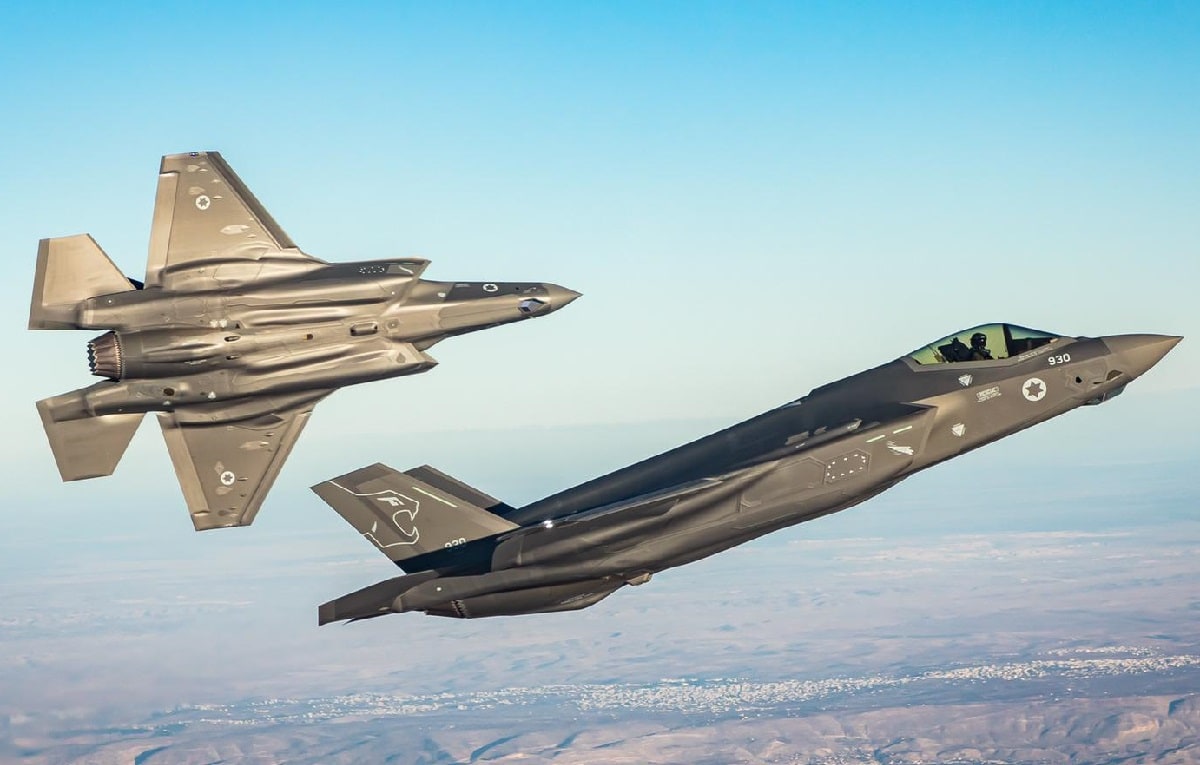On Sunday, three F-35I “Adir” jets touched down in Israel, and will soon enter service with the Israeli Air Force (IAF). With these three additional aircraft, Israel will operate 27 of the Lockheed Martin-built fifth-generation stealth aircraft, The Times of Israel reported.
F-35s in the Middle East
By 2024, an additional twenty-three Israeli variants of the F-35 Joint Strike Fighter are set to be delivered, bringing the total number of operation fighters to fifty. However, the government in Jerusalem has further agreed to purchase additional F-35s in the coming years, although the exact number has yet to be determined and finalized. The Middle Eastern nation had previously announced that it would buy more than 100 F-35I fighters at an estimated cost of more than $5 billion to replace the IAF’s F-16s.
Last August the second Israeli Air Force F-35I “Adir” squadron was officially declared operational, and ready to take part in IAF activities. In 2015, it was announced that the 140th Squadron, also known as the “Golden Eagle Squadron,” based at Nevatim Air Base, was reactivated specifically to receive the Israeli F-35I. It received its first two aircraft in December 2016. Before being shut down in August 2013, the Golden Eagle Squadron flew F-16A/B fighters.
The second squadron, the 116th Lions of South Squadron is also based at Nevatim Air Base. The squadron was first activated in 1956 and was then known as the “Flying Wing Squadron,” and it initially flew American World War II vintage P-51D Mustangs at Tel Nof.
Meet the F-35I
Adir is the local name for the U.S.-built Lockheed Martin F-35 Lightning II, which means “Mighty One” in Hebrew. The first nine of the advanced stealth aircraft became operational with the IAF in December 2017.
Israel’s interest in the F-35 jet program goes back to the early 2000s when the IAF explicitly committed to replacing its aging stock of F-16s with procurement of at least one hundred F-35A aircraft. The Israeli version features a domestic advanced electronic warfare (EW) suite that is actually layered on top of the jet’s existing avionics.
Additional changes include a special, IAF-tailored helmet-mounted display, bespoke datalink functionality that is specific to the Israel Defense Forces, as well as additional enhancements to the F-35’s already-potent data gathering and processing capabilities. All of these enhancements have been significant enough to warrant the ‘I’ designation, making the F-35I one of few just a handful of formally acknowledged F-35 variants.
Israel is also reportedly working on the development of external fuel tanks, which could be complete and operational within two years. TheAviationist reported that the Israeli Air Force Flight Testing Center (FTC) at Tel-Nof AFB is developing the external drop tanks that will help the Adir to complete long-range missions over so-called ‘third circle’ targets, which could allow for a hypothetical strike against Iranian objectives without the need for aerial refueling. The tanks could also allow for extended time on station (TOS) over other targets.
Peter Suciu is a Michigan-based writer who has contributed to more than four dozen magazines, newspapers and websites. He regularly writes about military small arms, and is the author of several books on military headgear including A Gallery of Military Headdress, which is available on Amazon.com.

